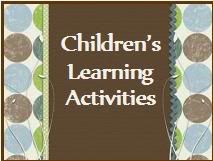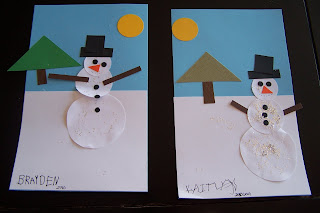Now that I have 2 kids, one of the tougher jobs on my list is grocery shopping. Well, shopping in general. I have not yet mastered the art of managing two children, one grocery cart, a crowded grocery store, checking off a list, reading labels, and keeping on budget while teetering oh-too-close to either a
nap time or meal time. Don't get me wrong--my girls are remarkably well behaved in the store, even with a mom on the brink of a meltdown. You may have seen me out and about...you know, the one answering the thousandth "What's that?" question from a toddler while trying to see which items are on sale and removing the
cart strap from the baby's mouth for the
umpteenth time. I may or may not be crying. *wink* On a good day you'll see me humming to myself, trying to enter in to my quiet place where I can actually remember what's on my list. Or where I put my list. Anyways...
So is it possible to learn AND shop at the same time? Sure! Here's a few things you can do while you are out shopping to help your toddler or
pre-toddler learn, have fun, and possibly allow you to get some shopping done without having to resort to "The Quiet Game." :)
For most of these, it helps to have a Shopping Notebook set aside that you use especially for the store.
1. Stickers-- Peeling stickers is a great fine motor activity. Chances are your child will/does love stickers. They don't have to be expensive, either. Local dollar stores have a pretty good selection generally. If you come prepared, draw lines or shapes in a notebook and have them put the stickers on the lines/shapes you've drawn. (A little hand-eye coordination work).
Another sticker option is to call out body parts and let them stick them on. "Put a sticker on your knee. Put a sticker on your elbow."
2.
Pre-printed lists- This takes a little
pre-planning, but is totally worth it at our house! Here are 2 options:
*Print off pictures of items needed. I use Google Images, cut and paste. I also put them in order of the aisles at
Wal-Mart. For example, I know I start in the back of the store with dairy. So all my dairy items are at the top. You can then ask them "What's next?" "What's first?" "What's last?"
*As you shop, call out items on the list and have your child check them off, or mark through them. It will take them a little while to find them and then mark through them.
For older kids, you won't need to call out anything. Just let them observe and check it off!
3. Coupon sorter: Get your coupons ready and as you get your item, let them look through a stack and see if there is a coupon for that item.
4. I spy: This is a personal game, not one they play with you. Draw or print off a picture of an item and glue it on the top of one page (example: a shirt). Then make a column of colors, like a red shirt, blue shirt, green, etc. As they go through the store they have to see if they can find these things, and then check them off. As you wait in line, help them finish off the list and see how many they've gotten.This is a good chance to work on colors, observation, and tallying.
*For older kids, see if they can find more challenging things, like something sweet, grumpy people, happy people, a kid with a toy, a baby with a bottle, etc.
5. I got this idea from Parenting Magazine--
"Honk if you love..." (or quack, whatever) Choose a funny sound and an object. Whenever you see the object (a teddy bear, a circle, a baby) you both have to make the sound. They'll be very focused on looking around and making the funny sounds. It makes shopping fun for us. :)
6. Again, from Parenting---
"Posers in Waiting"--Both of you strike a pose and hold it until the line moves, like making a face, stand on one foot. The person that stays still the longest gets to choose the next pose.
7. Can you find..
*Someone that has the same color shirt on as you?
*Someone with mommy's hair color?
*Someone with something in their cart the same as ours?
*A mommy shopping with 2 kids, like us?
8. Texture talk- As you bag up your produce, ask them questions. "Do you see a food that looks bumpy? How does this feel? Is this soft or hard?" You can even involve them in the process of choosing your food. "I'm looking for bananas that have NO brown on them. Can you find some bananas that don't have any brown?" or "See how this apple has a little spot on it that feels soft. We don't want that one. Check this apple and see if it looks good." "When we pick out a
cantaloupe, you can smell this part. If we can smell
cantaloupe, it might be a good one. Do you smell anything?"
9. And finally...the Quiet Game. Or the Still Game. Personal favorites of mine when you just need a moment. Pretty simple--see how they can sit perfectly still or perfectly quiet. *
Aaaahhh...*
How about for the babies? Talk, talk, talk. Tell them what you are doing, what's on your list, what you see.
Happy Shopping!
Any tricks in your bag? Share!!















